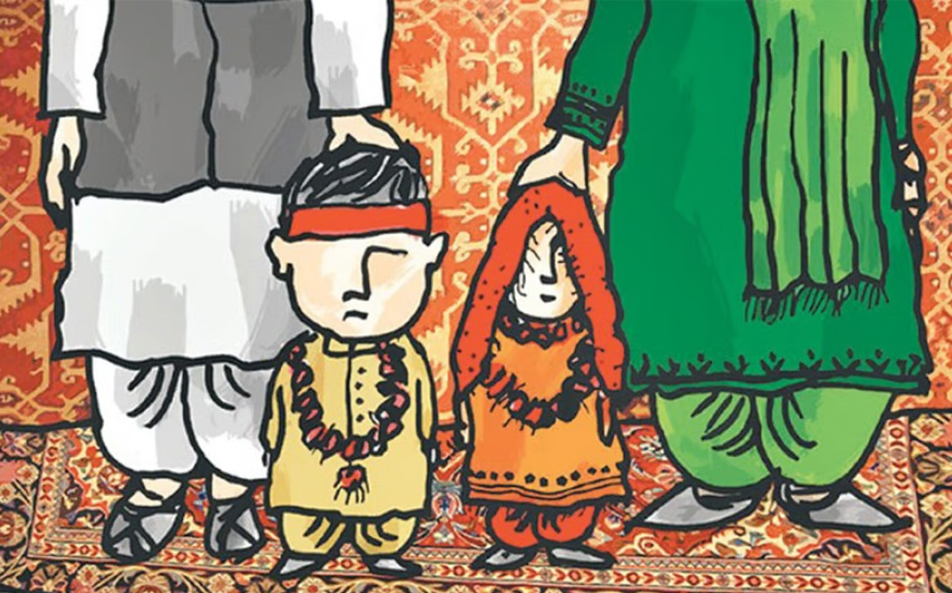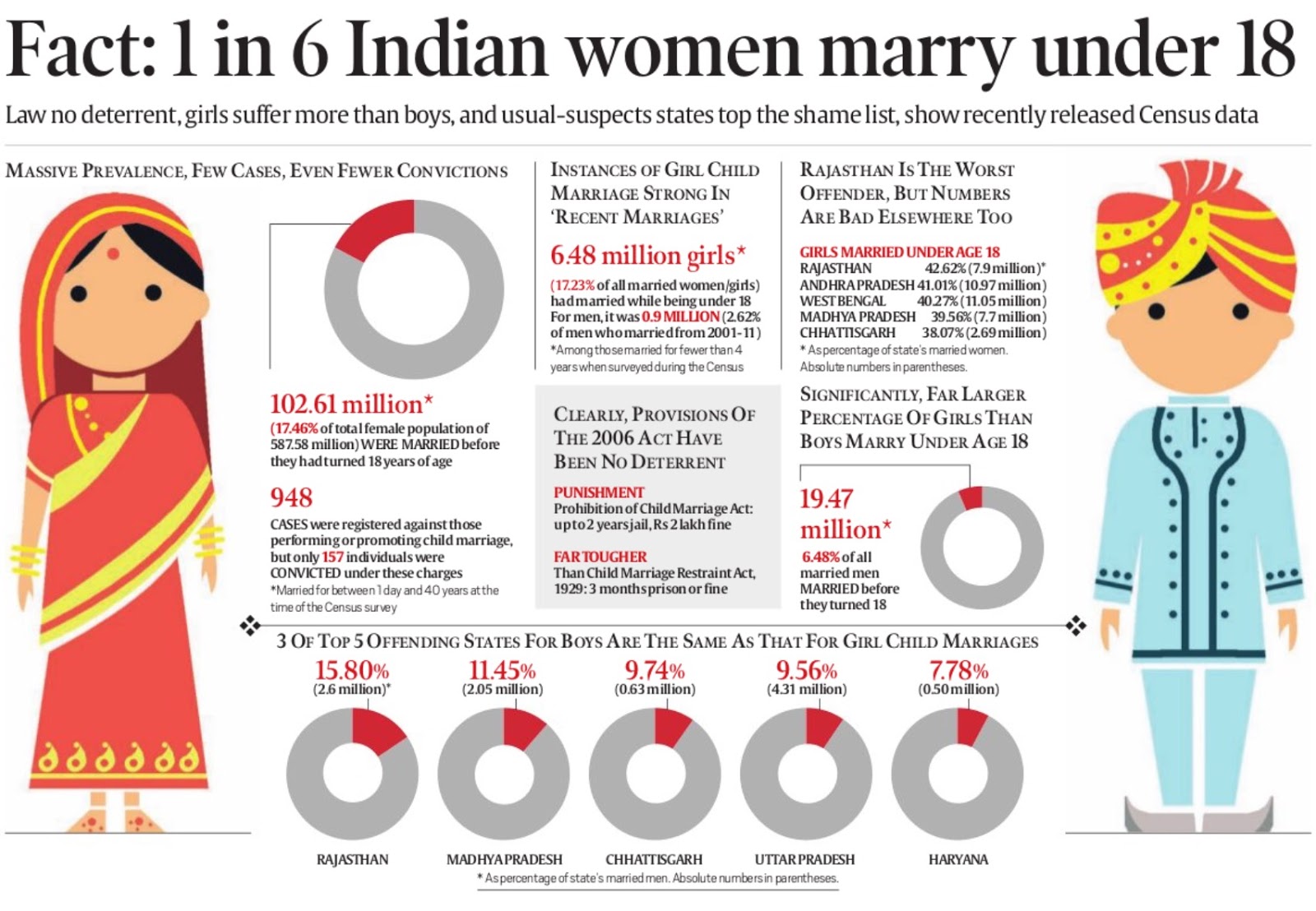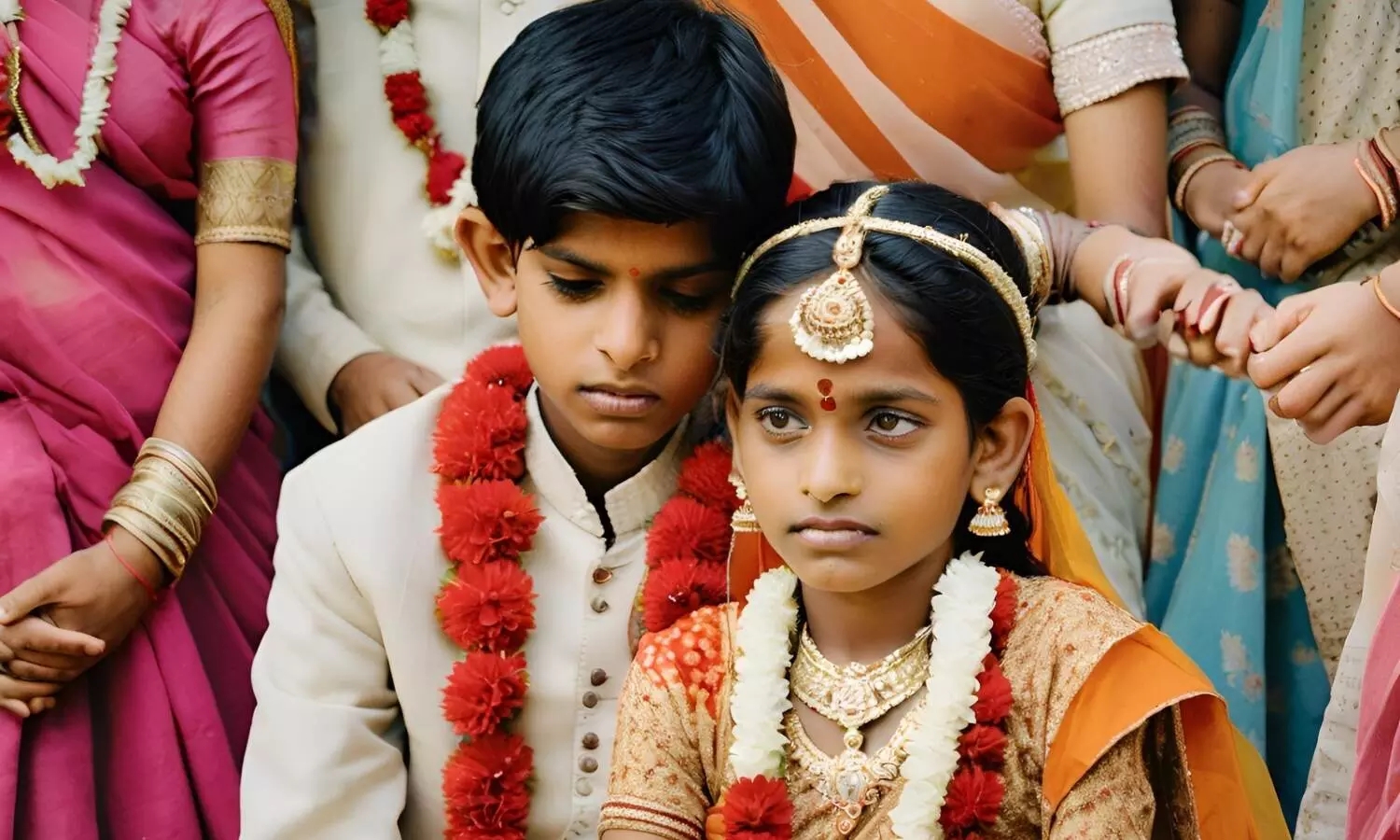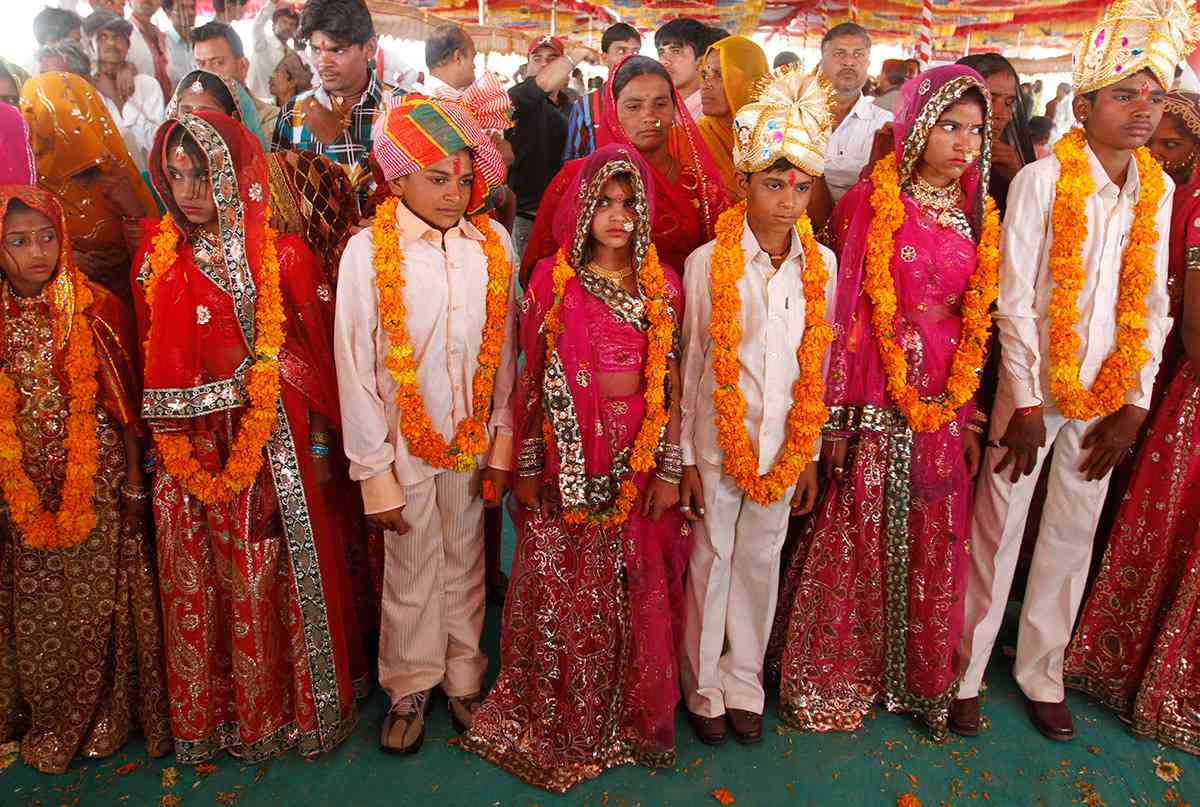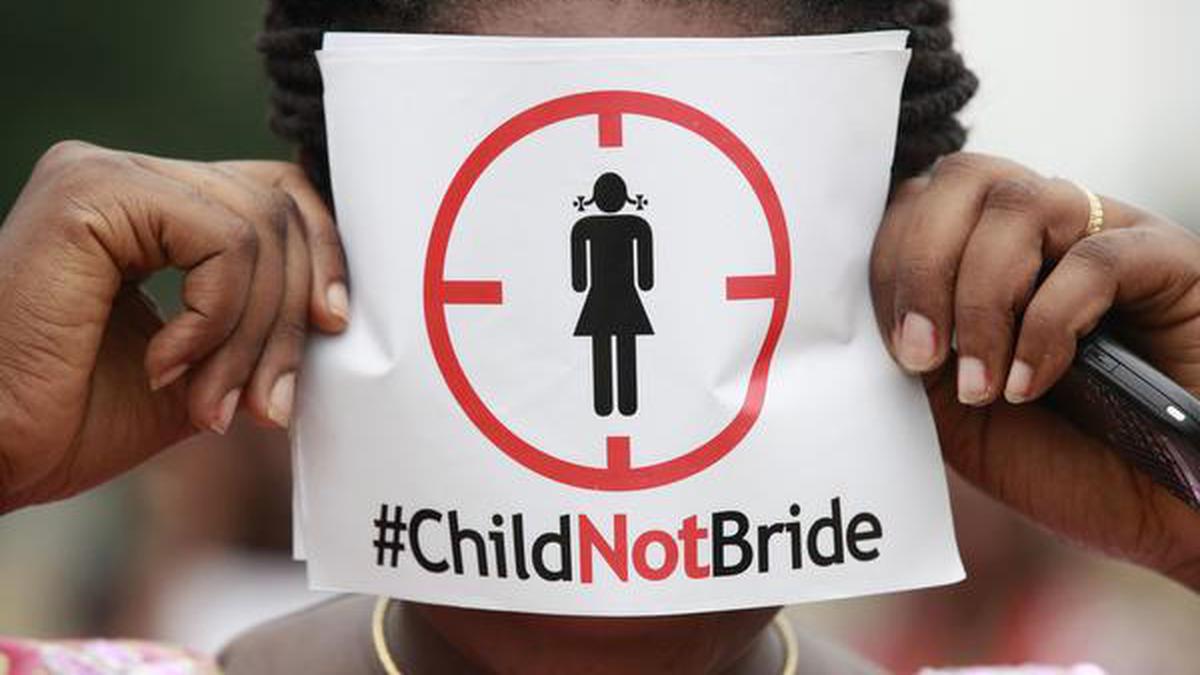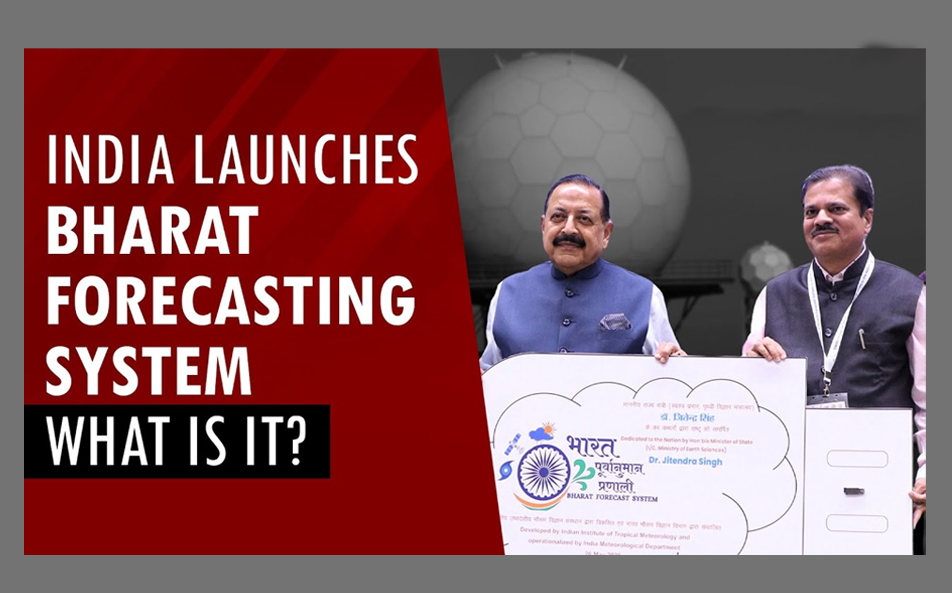
The United Indian

Child marriage, a deeply rooted social evil, continues to plague many parts of India. This practice not only robs young girls of their childhood but also has severe consequences for their health, education, and overall well-being. To address this pressing issue, the government of India, along with various NGOs and civil society organizations, has launched the "Child Marriage Free India" campaign. India has been globally acknowledged, with UN reports attributing South Asia’s largest decline in child marriages to India's efforts. According to government data, child marriage rates have declined from 47.4% in 2006 to 23.3% in 2019-21. The government aims to further reduce it with stringent efforts.
Issue of Child marriage in India
Over 4400 child marriages take place everyday but only 3.8K cases were registered during last 5 years. Child Rights Activists lauded the Apex Court judgement and highlighted that India is home to 220 million child brides (those below 18 years). Statistics like this show how child marriage in India remains a persistent social issue, despite significant strides in recent years. This harmful practice, often rooted in cultural and socioeconomic factors, has severe consequences for young girls. Child brides are frequently denied education, forced into early motherhood, and subjected to domestic violence. The lack of awareness, poverty, and gender inequality contribute to the prevalence of child marriage, particularly in rural areas. While the government has enacted laws to prohibit child marriage and various organizations work tirelessly to combat this issue, challenges persist. Addressing child marriage requires a multi-faceted approach, including strengthening law enforcement, promoting education, and challenging societal norms that perpetuate this practice. By empowering girls and creating a supportive environment, India can hope to eradicate child marriage and secure a brighter future for its young women.
Root Causes of Child Marriage in India
- Poverty: Economic hardship often drives families to marry off their daughters early, viewing it as a way to reduce financial burden and secure the girl's future.
- Social Customs: Deep-rooted traditional beliefs and patriarchal structures perpetuate the practice of early marriage.
- Lack of Education: Limited access to quality education for girls makes them more vulnerable to early marriage.
- Gender Inequality: Deeply ingrained societal norms that value boys over girls contribute to the continued practice of child marriage.
The Child Marriage Free India Campaign: A Beacon of Hope
The Government of India has taken significant stride towards eradicating the social evil of child marriage in India by launching the "Bal Vivah Mukt Bharat" campaign “Bal Vivah Mukt Bharat” campaign, which aims to eliminate child marriage in the country. The event that took place at Vigyan Bhawan in New Delhi. saw Smt. Annapurna Devi, the Union Minister for Women and Child Development, lead the event. Smt. Savitri Thakur, the Minister of State for Women and Child Development, also attended it.
Goals of the Campaign
The “Bal Vivah Mukt Bharat” campaign aligns with the Prime Minister’s vision for a “Viksit Bharat” by 2047. It emphasises the need for equal opportunities for women and girls. The campaign aims to empower young girls and promote their education, skills, and entrepreneurship. The 3 major goals are :
1. This campaign targets seven high-burden states: West Bengal, Bihar, Jharkhand, Rajasthan, Tripura, Assam, and Andhra Pradesh.
2. Focus areas include 300 districts where child marriage rates exceed the national average.
3. The goal is to reduce the prevalence of child marriages to below 5% by 2029.
4. The launch of the Child Marriage Free Bharat portal, a platform to raise awareness, report cases, and monitor progress
Pledge and Participation
During the launch, a pledge against child marriage in India will be taken. The campaign aims to involve up to 25 crore citizens. This collective effort is crucial in addressing child marriage and supporting girls’ rights.
Online Awareness Platform
The event will introduce the “Child Marriage Free Bharat” portal. This online platform will raise awareness about child marriage and provide resources for reporting cases. It aims to engage the public in prevention efforts.
Child Marriage Free Bharat Portal
The portal is designed to facilitate effective monitoring of Child Marriage Prohibition Officers (CMPOs) by strengthening supervision and evaluation mechanisms to ensure their active role in preventing child marriages and supporting affected individuals.
People will be able to register their complaints pertaining to child marriage, and these will be directed straight to the concerned CMPOs anywhere in the country.
All states have been directed to log on to the portal and register the CMPOs so that there is real-time monitoring of cases.
Nodal officers will be assigned at the Centre for monitoring the portal.
It seeks to enhance public access to information, making it easily available to enable better communication and support.
Laws Protecting Against Child Marriage in India
- Legal Provision: The Prohibition of Child Marriage Act (PCMA), 2006: It is the primary law addressing the child marriage in India, which replaced the earlier Child Marriage Restraint Act of 1929.
- Minimum Age of Marriage: The PCMA sets the minimum age of marriage at 18 for women and 21 for men.
- Punishments: Those who perform, conduct, or direct any child marriage can face rigorous imprisonment up to two years and/or a fine up to one lakh rupees.
4. Child Marriage Prohibition Officers (CMPOs): The act mandates the appointment of CMPOs to prevent child marriages, create awareness, and ensure the law’s implementation.
5. Supreme Court’s Stance: The Supreme Court of India has emphasised that the PCMA cannot be overridden by personal laws, asserting that child marriages violate minors’ free will to choose their life partners.
The court has also issued guidelines for the effective implementation of the law, stressing the need for community-driven approaches and multi-sectoral coordination.
Conclusion
The journey to eliminate child marriage in India is an ongoing process. Each prevented marriage, each girl saved, is a victory for human rights. The "Child Marriage Free India" campaign is a significant step towards building a brighter future for our young girls. By working together, we can create a society where every girl has the right to a safe, healthy, and fulfilling life. Let us join hands to make this dream a reality.
While challenges persist, the collective efforts of government, NGOs, communities, and individuals are creating meaningful change.
India stands at a critical juncture. The path to progress is clear—education, awareness, and unwavering commitment to protecting our children's futures.
Together, we can and we will create a Child Marriage Free India.
Read more in Government Sector
May 28, 2025
TUI Staff
May 22, 2025
TUI Staff

Stay Tuned with The United Indian!
Our news blog is dedicated to sharing valuable and pertinent content for Indian citizens. Our blog news covering a wide range of categories including technology, environment, government & economy ensures that you stay informed about the topics that matter most. Follow The United Indian to never miss out on the latest trending news in India.
©The United Indian 2024

